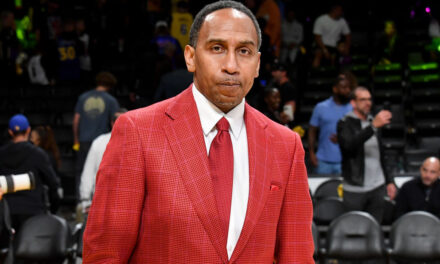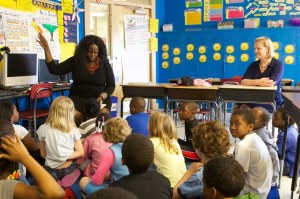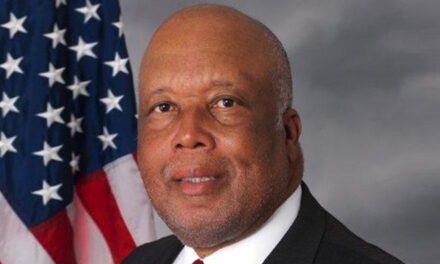
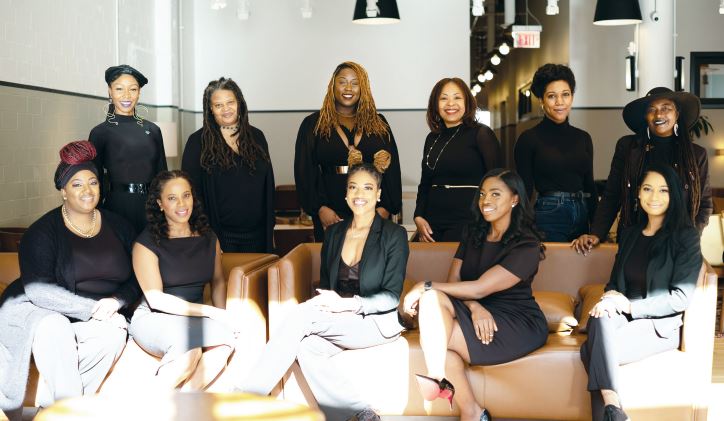
By Micha Green and Sheika Reid
Special to the AFRO
As part of the annual We’re Still Here special edition on Community Activists, the AFRO highlights the people who are fighting for justice in D.M.V. and Baltimore communities. This year’s theme, “Queens of the Movement,” celebrates the women who are working to strengthen and empower Black people, provide opportunities for growth, access and change and who are on the frontlines of pushing for justice and equity.

Historically, women have been at the forefront of Civil Rights action, from Ella Baker, to Fannie Lou Hamer, to Gloria Richardson, to Rosa Parks, to Mamie Till and Coretta Scott King, women have always been outspoken in the struggle for true freedom in the United States; yet their leadership has been overshadowed by the men of the movement. For instance, while women were major planners and organizers for the 1963 March on Washington, the only woman who was able to speak at the famous rally was performer and activist Josephine Baker.
In recent history, major movements such as Black Lives Matter, MeToo and the Women’s March started with the organization, ingenuity and bravery of women- Black women at that. Tamika Mallory, a Black woman from Harlem was one of the leading organizer’s of the famous 2017 Women’s March; Alicia Garza, Patrisse Cullors and Opal Tometi are the three Black women who formed the international Black Lives Matter movement; and Tarana Burke is the Black woman who started the Me Too movement. As with Black women, their leadership and every move are often targeted for criticism and sometimes shrouded due to naysayers and those highlighting the controversies as opposed to uplifting the causes for which these women are fighting. Nonetheless, the women stay in the fight.
The women on the AFRO Activists 2022 list make history as organization founders, entrepreneurs and community activists who are strengthening Black communities locally, nationally and internationally. Read below to check out this intentionally intergenerational group of women as well as learn about what sparks their activism and how you can join in supporting their movements.
Kelsye Adams: Activist, Organizer, 30
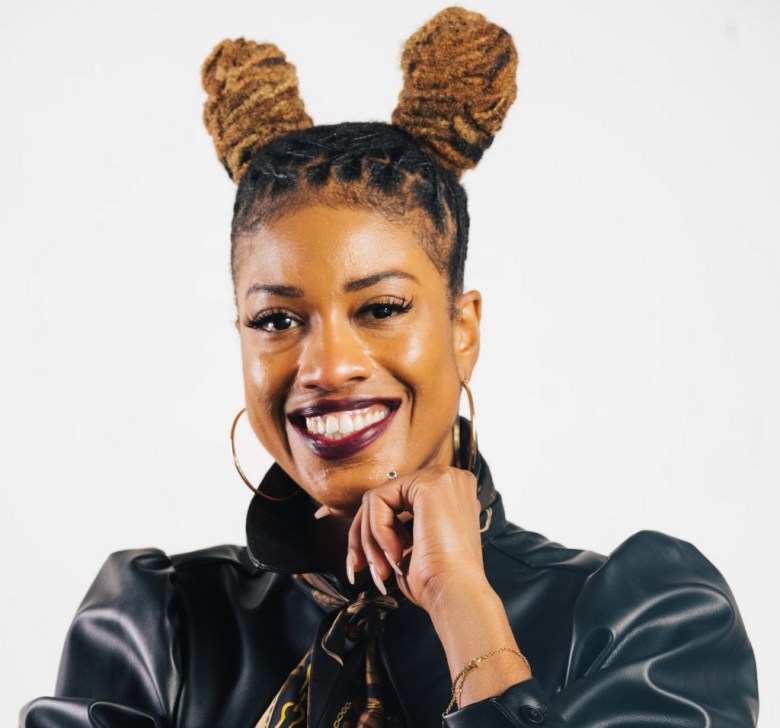
How would you describe your activism?
“Culturally, Community based activism and Rapid Response protest work.”
What sparked your activism?
“My activism was sparked by the need for more young, Black voices in dominant political spaces.”
How does your activism influence the community, those you’re advocating for and the people you hope to serve?
“My activism influences others through community and cultural building that connects politics and arts with a hopeful lens of systemic change here in the DMV.”
Who are some of the activists that influence you and why?
“I have been the most heavily influenced by Josephine Butler and her quest for D.C. Statehood. I am intrigued by her work as the lack of D.C. Statehood has continued to be a detriment to the Black community that dominates the city and my specific passion to fight for a true democracy.”
How can others follow your work or join your movement?
“Follow me at @misskelsye, @longlivegogodc and @moechella on all socials.”
Lisa Bleich: Community Facilitator and Organizer, 55
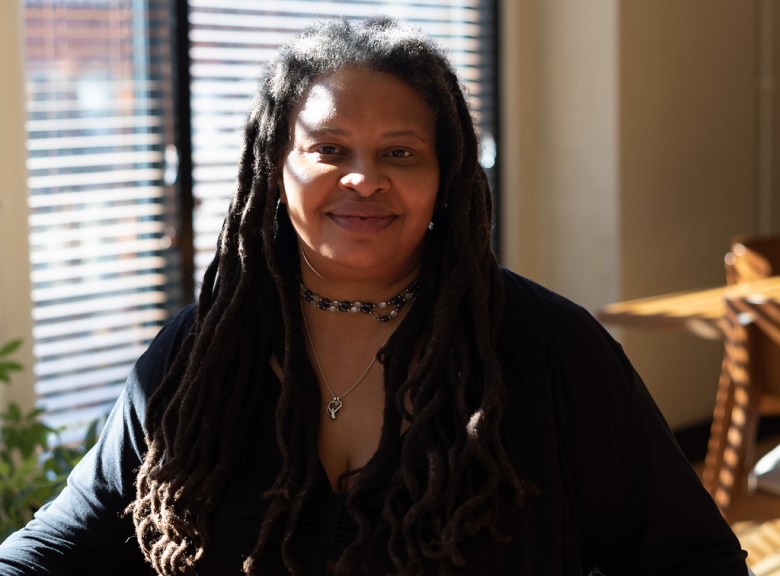
How would you describe your activism?
“I help communities organize and speak back to the systems and institutions that affect their lives, like school systems, universities and government agencies. I help people to design systems that are non hierarchical, peaceful and value all the voices in the room. I facilitate difficult conversations, teach conflict resolution skills and promote self governance and authentic engagement in all communities.”
What sparked your activism?
“I was born Black, female and bisexual in a world that seemed not to value any of those things. We were in the midst of a cold war and people openly talked about nuclear war, like it could happen at any time. It seemed strange to me that people accepted the idea that we could all die because we couldn’t talk to each other. It made me deeply curious about the nature of people, groups and society and started me on a quest to understand more and make the world better for the children that came behind me.”
How does your activism influence the community, those you’re advocating for and the people you hope to serve?
“The problems that we have facing us as humans on this planet are large and complex. To enact the kind of solutions that will reset the climate and have us living in balance with nature and each other, create much better educational outcomes so that everyone can get a fair start, eliminate deep structural inequities in income and access, and make fair restitution for the hurt that our biases have caused, we will need the help of every single person. Every voice matters, every action counts and we must work together to solve problems together. This means collaboration, productive dialogue and shared decision making. It means balancing power and building systems that put their values in the front of all their operations.”
Who are some of the activists that influence you and why?
“I grew up just after the Civil Rights movement and became fascinated by the power of organized people to fight back against injustice. Of course, I studied Dr. King, which led me to Gandhi and began my journey into understanding the strategy of nonviolent resistance. I was also moved by the Black Panthers and their 10 point plan (which still resonates to this day). In my teens and early 20’s, I marched to support the divestment movement against apartheid and for the freedom of Nelson Mandela. The first issue to really get me moving in the community was the ongoing plight of political prisoners; some of whom still suffer inhumane treatment and lifelong captivity for their service to the liberation of African American and Native people in the United States. The work of Angela Davis was instrumental to my understanding of this issue.
How can others follow your work or join your movement?
“We are part of the Wildseed Ecosystem and we can be reached at hello@wildseed.co”
Anything else you’d like to add?
“Power to the people.”
Brielle Bucksell: Founder and Executive Director of From Pain to Power, 26
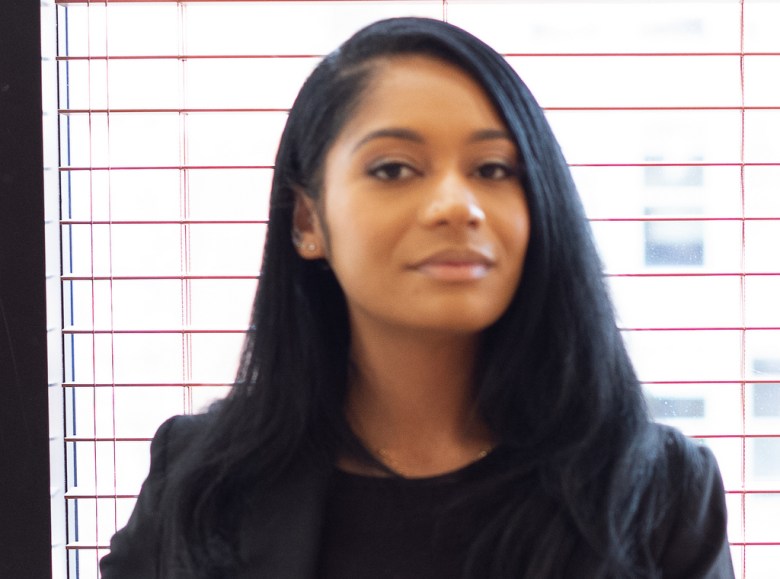
How would you describe your activism?
“I use my experience and my voice as a platform to raise awareness for and speak out against domestic violence with hopes that other survivors speak out and victims gain the courage to leave abusive situations.”
What sparked your activism?
“My activism was sparked by the need for women to feel safe in their existence, as many women experience domestic violence and suffer in silence.”
How does your activism influence the community, those you’re advocating for and the people you hope to serve?
“I provide women with insight and resources necessary to help them heal from and overcome their situations. I have high hopes of creating a safe haven for victims and survivors as well as implementing programming to boost self-confidence and foster independence.”
Who are some of the activists that influence you and why?
“I was inspired by a woman named Katrina Goodwin who shared her story on a show called ‘Skin Decisions’ on Netflix. Her experience moved me and encouraged me to share my story as well.”
How can others follow your work or join your movement?
“To keep up with the work that I do, people can follow my Instagram page @frompaintopower and visit my website www.frompaintopowercorporation.org.”
Chantél Clea, CMP: Founder & CEO, Clea Event Productions
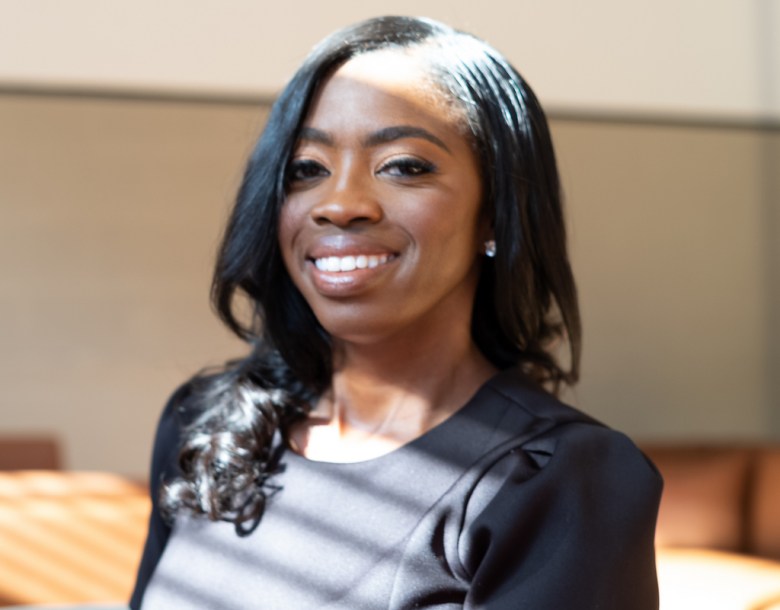
How would you describe your activism?
“As an Event Producer and Brand and Marketing Strategist, my activism looks different to most people. From securing permits for marches/rallies to Executive Producing the NAACP Spingarn Awards Dinner to honor Quincy Jones, I produce experiences that EDUCATE, ENTERTAIN, and EMPOWER Black people. I’ve spent the last 20 years doing the work to tell OUR Story and elevate OUR Message. When people ask me to explain what I do, I simply tell them, I am a Conductor for the Culture.”
What sparked your activism?
“After graduating from Northwestern High School in 2000, I started as an intern for the NAACP National Office, at the time located in Northwest Baltimore. While working there I started to see how my small assignment contributed to major events that would oftentimes be in the national news. I began helping Tiffany (Hawthorne) Tucker, the Event Coordinator for the Programs Department, with small tasks, and within a short span of time, I then realized that helping to think through and planning logistics came naturally to me. Like most interns, I started out filing paperwork, answering phones, taking messages then over time my responsibilities increased. I began to help with the Program Information Exchange Center, where it brought in figures from the Great Blacks in Wax Museum which highlights heroes and sheroes of the Civil Rights Movement; to planning demonstrations at the nation’s Capitol Building; working on events that honored the Little Rock Nine, and the National Convention. All the while, our deep, rich history (that was never learned in school), began to take root. The activism spirit was planted at the NACP in June 2000, and my roots grow strong over the 15 years that I work there.
“The knowledge that I gleaned from the NAACP gave me the confidence and foundation to launch my own business, Clea Event Productions in 2016, where our mission is to produce experiences that educate, entertain, and empower the culture.
How does your activism influence the community, those you’re advocating for and the people you hope to serve?
“First, I only take on projects that I’m passionate about; where the mission or message has a purpose that will help uplift the Black community. Once I’m connected to a project, I pour in my passion for my people and produce an experience that will elevate the brand/message of our clients who are working to serve the Black community in many different ways. The Collective PAC, works to build Black Political Power all across the country from the local school board all the way to the White House; Black Mental Health Alliance, elevates the importance of mental in the Black community and connects persons seeking help with Black Mental Health Professional; or the William Trotter Collaborative for Social Justice at the Harvard University which. ‘Connect Harvard University faculty, students, and scholars conducting research in advocacy, social justice, and related topics with local and national organizations working to create a more profound understanding of the frontiers of practice and the challenges faced by advocates.’”
Who are some of the activists that influence you and why?
Fannie Lou Hamer, who was “Sick and Tired of being Sick and tired” so she worked as a community organizer to advocate for Women’s Rights and Voting Rights during the Civil Rights Movement. I’m also influenced by present-day activists, Ava DuVernay, Shondra Rhimes, Regina King, beautiful Black Women that unapologetically tell our stories from the TV screen to the Silver Screen, all for the World to see. Clarence Avant “The Black Godfather”, started out as a music executive in the 1960’s. Over the span of 7 decades, Clarence Avant was the person advocating and demanding equity for Black people in the music industry, sport, Hollywood, and politics. Along with Jessie Collins, I believe is the first Black Executive Producer for the 2022 Super Bowl Halftime Show. Collins has played a very important role in producing memorable TV moments which uplift the culture.
How can others follow your work or join your movement?
“People can stay engaged by following @ACleaProdcutions on Instagram and Facebook and visit our website and signup for our newsletters www.CleaProductions.com.”
Navasha Daya, Cultural Arts Activist, Organizer and Spiritual Activist, 46
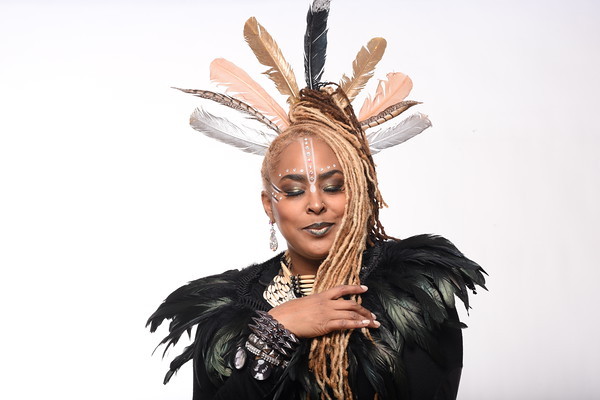
How would you describe your activism?
“I was raised by parents who take action on issues that affect people of African descent internationally. Both of my parents are indelible nation builders rooted in family, spirituality and culture. I was also raised within a village-like community of families and elders who to this day continue to advocate and fight for justice and equity. Wherever I travel in the world, especially as a performing artist, I ask how the women and children are treated, how the elders are treated and which people have been historically oppressed. I have always looked up to other artists and spiritual leaders in history who used every opportunity to speak truth to power even when it meant losing a job or critical acclaim. I love my people and humanity; through my daily actions and artistry I work to address social ills impacting humanity in hopes of sparking change and true balance on this planet.
What sparked your activism?
“Through CULTURAL activism I make an effort to bring awareness and understanding that recognition and respect of indigenous culture can bring balance in our society.
“Through SPIRITUALITY I work to encourage others to look beyond their scope of understanding so as to recognize the beauty that exists in religious and spiritual practices and paths. We are still in a time of “I” versus “we” and must root ourselves in something greater than ourselves. Bringing balance to the world begins with seeking balance within ourselves.
“As a community arts organizer and activist, I work with my soulmate and husband Fanon Hill through the Youth Resiliency Institute- an organization under the umbrella of Fusion Partnerships, Inc. Fanon and I co-founded the Youth Resiliency Institute in 2010 to inspire the realization of the authentic self in children, youth, families and elders.
“An important aspect of being an activist is to be actively cognizant of what is happening around you and to be willing to take collective action through strong partnerships where there is ‘values alignment.’”
How does your activism influence the community, those you’re advocating for and the people you hope to serve?
“Hopefully through inspiration! Inspiring others is something we all can do. Inspiring others to be who we were born to be and to recognize our strengths, abilities and to work with others to fearlessly advocate for true freedom and justice. We all can make a difference when we speak up and organize around an issue. Many people feel like their voices don’t matter. Studying activists and different global movements can also offer inspiration and encouragement. I also strongly believe that activism begins in the home. We must actively root out and address abuse within our families. Strong and healed families create strong communities and a peaceful world.”
Who are some of the activists that influence you and why?
“Miriam Makeba – also known as ‘Mama Africa,’ was an artist and activist that contributed to bringing African Music to the world. She sacrificed her stardom by singing many songs critical of apartheid and because of that was then banned from re-entering South Africa. This brought a sense of pride for those being oppressed by this system along with those around the world fighting against it. She is a strong example of using one’s art to fight against oppression without fear.
“Paul Robeson – he was multifaceted; he was a singer, actor, activist, athlete who also studied law. I remember learning about him as a child and realized the importance of not limiting my career paths and the importance of being fearless when it comes to speaking truth to power and lending your voice to justice. He greatly influenced a lot of activists we admire today.
“Norma Freeman – a Cleveland, OH based activist, she was a woman who was spiritually grounded, fought for equitable education for black children, built institutions with her soulmate and husband Don Freeman, and always gave back by mentoring youth and young adults including myself. She was a sought-after community leader and activist and gave great insight and advice.”
How can others follow your work or join your movement?
“There are many great movements and strategic actions that many people and groups are involved in and advocating for. A highlight of the Youth Resiliency Institute’s work was crafting an opportunity with former AFRO journalist Sean Yoes for youth residing in public housing in South Baltimore’s historic Cherry Hill community to have a commentary about their community published in the AFRO Newspaper: https://afro.com/afro-exclusive-cherry-hill-strong/.
“Today the Youth Resiliency Institute continues to positively impact communities throughout Baltimore through the cultural arts, family engagement and community arts organizing. People can learn more about this work here: www.lomnavalove.com/, www.cherryhillfest.com and www.youthresiliencyinstitute.org,
“Furthermore, as an artist, I mentor and provide spiritual and emotional support to emerging and established artists while continuing on my musical path creating music with artists and producers that work to shift consciousness, and hopefully, serve as a soundtrack to self-healing, love and elevation. www.navashadaya.com
“We need each other…and we need all hands on deck!”
Grace E. Gibson Callwood: Founder of WeCancerve Movement; 17
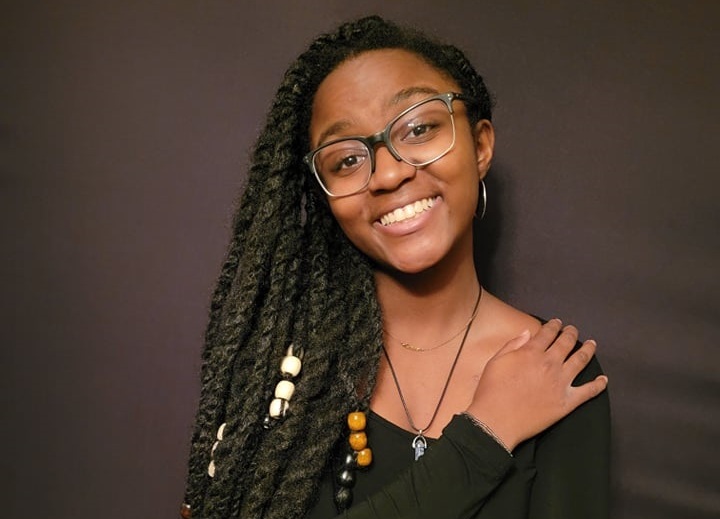
How would you describe your activism?
“We Cancerve Movement, Inc. is a nonprofit organization that rallies support of young people and others around a series of projects and initiatives created by our all-youth board of advisors to bring happiness to homeless, sick and foster children. For the past decade, we’ve reached more than 25,000 young people in the greater Baltimore area and as far as West as Ohio and east as Kenya. In 2020, I created the ‘Let’s Do More Microgrant’ in direct response to George Floyd’s murder to fund specific programming that benefits Black Maryland youth experiencing homelessness or who are aging out of foster care.”
What sparked your activism?
“Community service has always been part of my life. I’ve been giving back since age 2. So when I was diagnosed with stage 4 cancer at age 7, and had an opportunity to help two little girls who had lost everything in a fire, it wasn’t a stretch for me to translate the inspiration I felt from serving them into my nonprofit.”
How does your activism influence the community, those you’re advocating for and the people you hope to serve?
“I hope my activism demonstrates that there’s no age limit on service. Too often, adults place limitations on how and when they invite youth to contribute to issues that impact them. Youth councils and representatives on adult boards don’t often have full voting rights or access to full reports. That’s not the case with my business. Children as young as age 8 sit in budget meetings with me and help me decide how to designate thousands of dollars to various projects we create for homeless shelters, foster care group homes and children’s hospitals for example.
“I hope my activism also represents the importance of partnership and understanding how to serve the needs of vulnerable populations. One of my business philosophies is that helping others should not cause a burden to them. That’s why any project we take on to benefit homeless, sick and foster children, we check in with the recipient organizations to make sure we are truly meeting a need or want and doing so without causing a logistics headache for them.
“I know I have influenced the community by showing that young people want to serve even when they’re not receiving a grade or award! Our voices and ideas matter and we have a lot to contribute.”
Who are some of the activists that influence you and why?
“Marian Wright-Edelman is someone I look up to because she spent a lifetime advocating for the rights of America’s most vulnerable children, particularly children of color.”
How can others follow your work or join your movement?
“Our website is www.wecancerve.org and on social media @wecancerve.”
Anything else you’d like to add?
“Black youth disproportionately experience homelessness and live in foster care or are otherwise unaccompanied. My work is evolving; my passion to bring happiness to homeless, sick and foster children – all children who are in sad situations that are not their fault – is merging with my passion for social justice activism, and education and criminal justice reform. I hope to major in political science and minor in sociology at an HBCU, and attend law school.”
Jasmine Gibson: CEO and Founder of Miocoa Strategies, 27
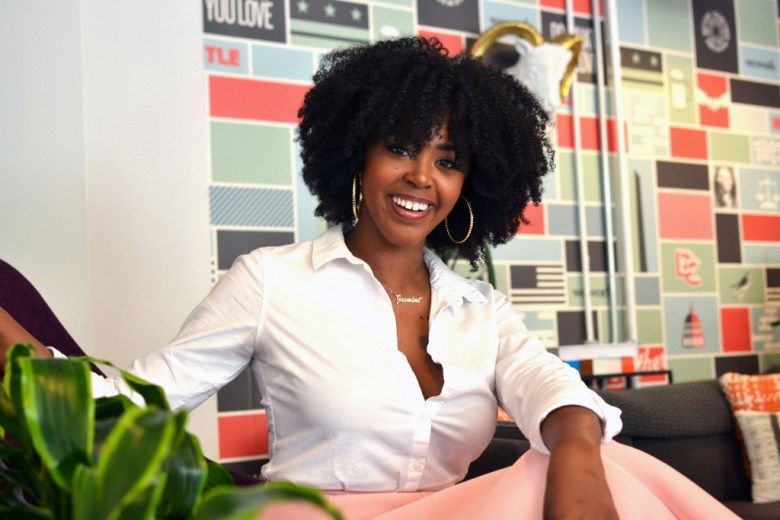
How would you describe your activism?
“Activism looks different to every single person. For me, it’s making space for Black women, especially Black women marketers. It’s using my access to pull up other women who are often overshadowed in rooms full of people whom they’re more qualified than. It looks like making sure they are seen, heard and valued.”
What sparked your activism?
“Starting my first agency (Miocoa Strategies) was when I knew activism would be a part of my story. It was the lack of grant funding, resources and even networking opportunities that made bootstrapping frustrating. It was discouraging, so I changed my business model to only work with Black women or orgs supporting Black women. Seeing and supporting Black women on the day to day made the work fulfilling. I can’t tell you how many people frowned at my decision to only serve Black women. It’s funny looking back at that now, since everyone I associate with or our team has worked with is thriving in abundance, limitless.”
How does your activism influence the community, those you’re advocating for and the people you hope to serve?
“I hope my activism tells other Black women they don’t have to assimilate or suffer to experience joy and peace. They get to build sisterhood and community while running a business and they don’t have to compromise. It’s my hope that other Black women look at me and say ‘she did it, so I can too.’ And, not the cliche she did it, but she really went after everything God gave her and she didn’t have to wear fancy suits or get a Master’s degree. They can look at me and know I’m no different than them. I wear a bonnet to sleep, and sometimes to board meetings.”
Who are some of the activists that influence you and why?
“Black women are my sheroes. From my mom to my friends, to my mentors to the women screaming ‘YASS girl,’ when I get my hair blown out. They are the influencers that matter to me. They give me hope, and more importantly they give me sisterhood.”
How can others follow your work or join your movement?
“You can stay connected with my journey online via @strategistjas on all platforms, opting to work with my marketing agency www.miocoa.com, or by making a donation to www.blackwomenmarketers.com to further our impact.”
Brion Gill: Spoken Word Poet, Executive Director (Black Arts District), Cultural Curator (Leaders of a Beautiful Struggle), 31
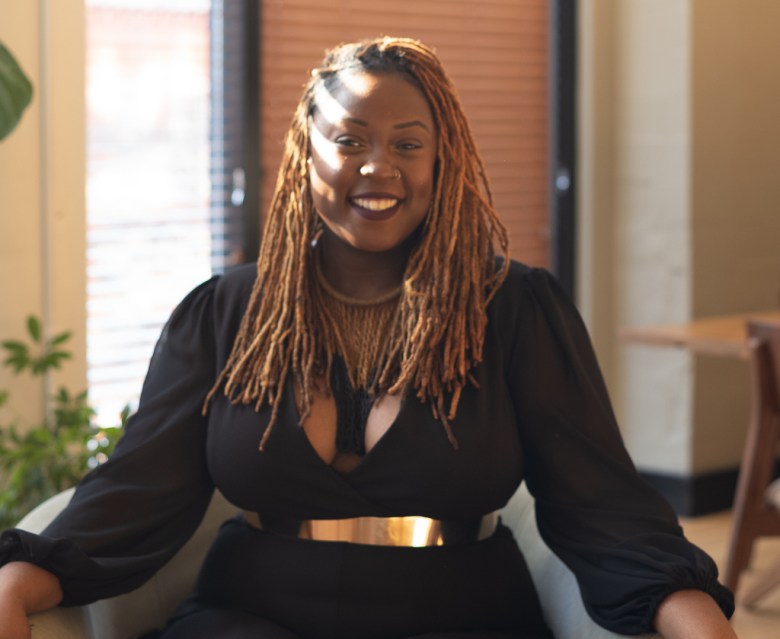
How would you describe your activism?
“I would describe myself as an artivist (artist + activist). I use my artistic talents to fight and struggle against injustice and oppression. Furthermore, I use my art, namely spoken word poetry, to raise awareness and push for social change. Lastly, as the new executive director of the Black Arts District, I wield my institutional power to push for greater cultural equity in Baltimore City.”
What sparked your activism?
“I started performing spoken word poetry in middle school after falling in love with the show Def Poetry Jam. In high school, I was introduced to my art teacher and mentor Ernest Shaw, and my debate coach Daryl Burch who showed me that my art could be used to motivate, persuade and move others to think differently, make changes within themselves and change the world around them.”
How does your activism influence the community, those you’re advocating for and the people you hope to serve?
“My artivism seeks to make Baltimore a more culturally equitable city. My artivism also helps to raise awareness about social ills and serve as a window into the lived experiences of folks from my socio-political location.”
Who are some of the activists that influence you and why?
“Activists that influence me are Amiri Baraka, James Baldwin Ella Baker and Fannie Lou Hamer. Amiri Baraka and James Baldwin were phenomenal writers, like myself, that used their words and their platform to educate, inspire and mobilize Black people. Their radical and unapologetic works seemingly gave permission to many other Black artists to resist the White power structure through their art and otherwise. Moreover, Amiri Baraka, like myself, didn’t just practice his art forms he also built institutions to train artists like the black arts repertory theatre, school. He also fathered the Black Arts Movement which paved the way for many artivists today. Ella Baker and Fannie Lou Hamer were true grassroots organizers that never fought for the spotlight, but worked directly with the communities they served to solve practical issues with practical solutions. They were women who cultivated and empowered others to sustain the work because it was about sustainability and not instant gratification or quick wins.”
How can others follow your work or join your movement?
“Folks can follow me on social media @ladybspeaks to see my work as an artist or connect with the Black Arts District via our social media pages @officialblackartsdistrict or our website www.blackartsdistrict.org”
Tiffany Ginyard: Award-winning Journalist, Author, Youth Development Professional; Resilience Coach, 37
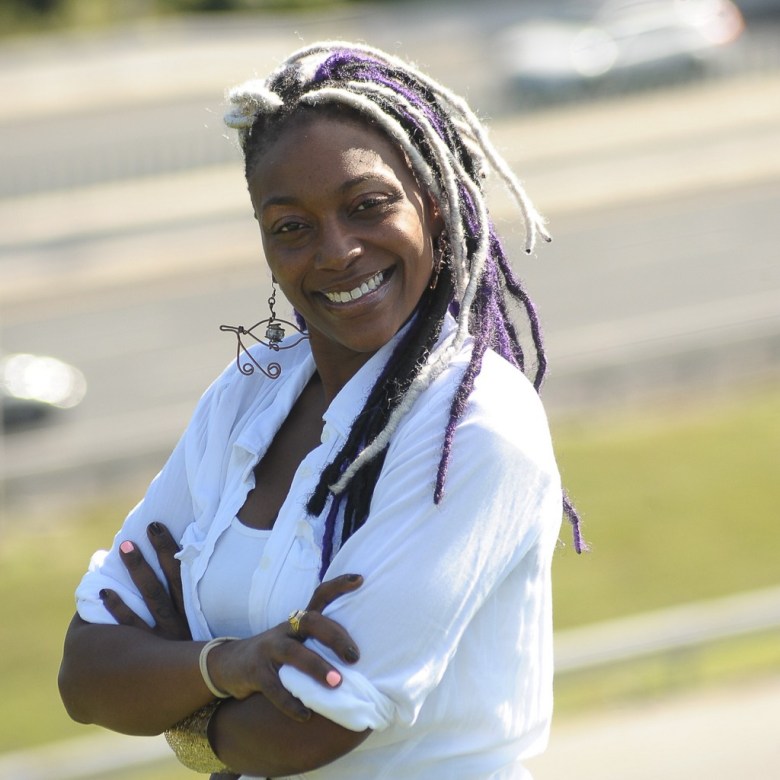
How would you describe your activism?
“Grassroots and Spirit-driven.
“As a certified Conscious Life Design Systems Facilitator, I offer support to individuals looking to anchor themselves in the processes and practices of consciously designing their lives from the inside out. In addition, as a certified HeartMath Coach and Facilitator I utilize research-based techniques and practices that facilitate physiological coherence and increase individuals capacity to build and sustain resilience.”
What sparked your activism?
“When I saw Charles sitting on the bleachers dressed in a green jumpsuit with tan, plastic flip flops, white cotton socks, and shackles at his ankles. He was an inmate at Baltimore City Detention Center (BCDC) awaiting trial, for what I didn’t know. Charles and I were 17 year old high school seniors, we went to the same elementary school and lived in the same zip code, but we were on different sides of an invisible line. I was at the jail on assignment at my internship at WBAL channel 11 . This assignment where I came in contact with Charles led me to the jail where Kweisi Mfume gave an inspirational speech to Charles and his ‘classmates’ in recognition of the academic progress they made while detained in an adult correctional facility, as a student enrolled in City Schools.
“My young mind at the time was perplexed at how this invisible line between me and Charles has in so many ways defined the trajectory of our lives. How did Charles, a ‘gifted’ student and very skilled visual artist, end up there?
“What made it such a pivotal moment is because the story we reported didn’t make the news. and that stirred something in me.
“The missing chapters to his story are what inspired me to anchor my life work in human service, youth development, spiritual advocacy and journalism; particularly working with institutions and organizations serving the black community in general, and vulnerable populations within it– the children and the elders.”
How does your activism influence the community, those you’re advocating for and the people you hope to serve?
“Since 2009, I’ve served as the Chief Inspirational Officer of The F.L.Y. Girl Network, Inc., a non-profit outreach organization dedicated to establishing a village of support and pathways of guidance for youth, young adults, and service providers that: (1) inspire self-awareness; (2) teach self mastery; and (3) facilitate transformative experiences that empower them to actualize a strong sense of SELF and their life’s full potential.”
Who are some of the activists that influence you and why?
Betty Bland-Thomas, South Baltimore Partnership; Ericka Bridgeford, Baltimore CEASEFIRE; Nef’fetiti Partlow Myrick, Visual Artist, poet-writer, teacher, spiritual activist, and grandmother; Diane Wilson Onwuchekwa, Dr. Jamal Bryant, Empowerment Temple & New Birth Missionary Baptist Church; Olu Butterfly Woods, FreeUp HomeSchool Coop, Dew More Baltimore; Bishop Walter Scott Thomas, New Psalmist Baptist Church
How can others follow your work or join your movement?
“You can find me on Facebook–Fly Girl Network, Inc.”
Anything else you’d like to add?
“Service leadership roles extend to the board of directors of the One God One Thought Center for Better Living as strategic planning chair and Partner Engagement Coordinator at Baltimore-based non-profit Fusion Partnerships, where we to catalyze social justice and peace through collaborative action, including fiscal sponsorship, facilitation, and community grantmaking.”
Cleve Mesidor: Founder of the National Policy Network of Women of Color in Blockchain, Author of THE CLEVOLUTION: My Quest for Justice in Politics & Crypto, 45
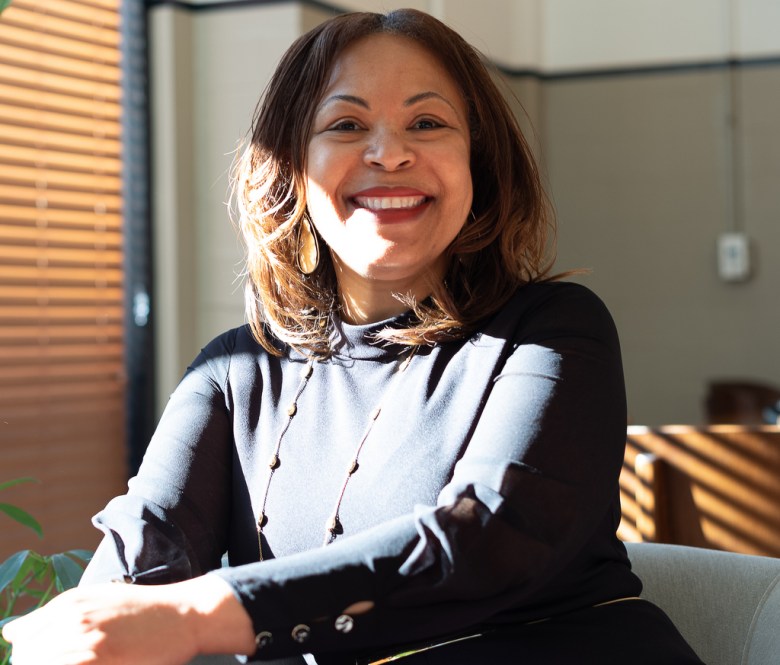
How would you describe your activism?
“In the United States, an estimated 55 million people are unbanked, underbanked, or lack access to centralized finance. We need new solutions to tackle these inequities and a financial system that is open, accessible and provides options to individuals who no longer trust traditional banking. I promote financial equity and serve as a catalyst, building networks and curating opportunities to empower Black and Latinx innovators and entrepreneurs in cryptocurrency and blockchain.
What sparked your activism?
“I have deep roots in Washington politics, having served as an Obama Presidential Appointee, a senior staffer in Congress, and in the leadership of national political campaigns. Blockchain has allowed me to continue to be a champion for social impact by tackling financial exclusion and advocating for diversity in the growing crypto marketplace and workforce.”
How does your activism influence the community, those you’re advocating for and the people you hope to serve?
“My work is at the intersection of blockchain and public policy.
“Women of color is the fastest growing demographic in the crypto marketplace, but we are often hidden figures. To shine a spotlight on female industry leaders building products and services on blockchain, I organize the annual Congressional Delegation of Women of Color in Blockchain on Capitol Hill.
“As an Advisor to the Blockchain Association, I launch diversity, equity, inclusion initiatives to promote crypto adoption in communities of color. While only 11% of White Americans report owning cryptocurrencies, 23% of Black Americans and 17% of Hispanic Americans own such assets, according to a recent Harris Poll.
“To promote inclusive policymaking that empowers rural and urban communities, I work with staffers in Congress to explore policy considerations to increase access to capital to women-owned small businesses and entrepreneurs. Last summer, I collaborated with Black and Latinx crypto leaders to draft a package of legislative proposals, which was submitted to the Senate Banking Committee.
“Additionally, I advocate for diversity as a Mayoral appointee to the DC Innovation and Technology Inclusion Council, which focuses on growing the District’s innovation and tech-economy.”
Who are some of the activists that influence you and why?
“I want to change the world one community at a time and I have tremendous admiration for the disruptors, activists, revolutionaries who have paved the way. Harriet Tubman is my unwavering, defiant shero who I believe had a secret ‘S’ on her chest. Visionaries Huey P. Newton, Elaine Brown, Bobby Seal are my Justice League. And as a daughter of Haiti, I see myself as a descendant of the greatest architects of freedom – Toussaint Louverture, Jean-Jacques Dessalines and Henry Christophe – who sparked a revolution that continues to reverberate across the globe still today.
How can others follow your work or join your movement?
“Follow me on Twitter: @cmesi; https://wocblockchainpolicy.com/; www.linkedin.com/in/cmesi/”
Gloria Nauden: VP, City First Bank; Founding member of DC Chapter of 100 Black Women; Co-Chair of DC Community Development Consortium, 51
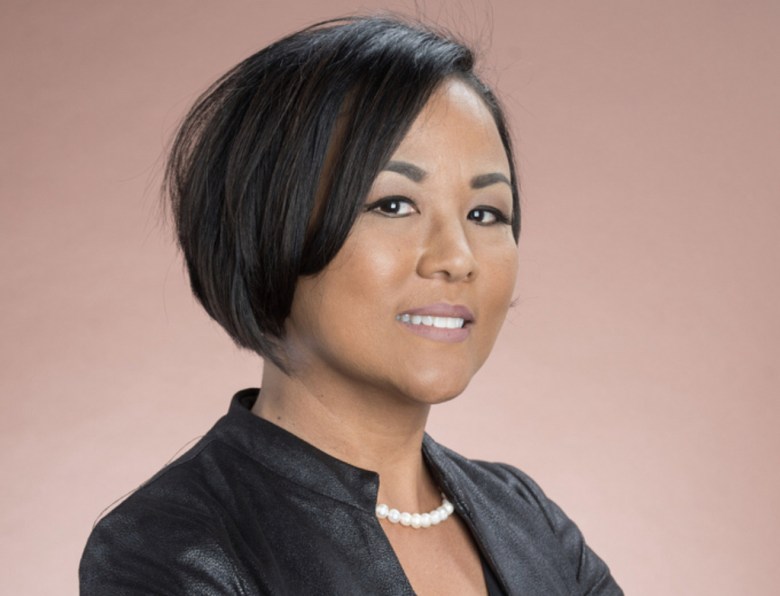
How would you describe your activism?
“I take a dynamic and strategic approach to my activism, anchored with love for humanity, specifically Black people, and rooted in data-informed advocacy to educate, inspire and inform change. Change can take place in policy, practices and societal behaviors. Information can be distributed through many mediums and places as platform for change: from art as activism, the career you choose, or having a cultural influence in your workplace, personal social media messaging, civic engagement, mentorship and youth development, fellowship circles, nonprofit participation, philanthropy, the dinner table and city hall. I serve in all these places and platforms. Of late, I am working deeply on systemic economic equity solutions to our most pressing and persistent issues around economic mobility and opportunities.”
What sparked your activism?
“Constantly experiencing the distinct difference between how my parents were treated in society (various parts of America). My beautiful, kind and hard working Black-veteran father was not granted the access to buy a business or obtain a commercial loan, whereas my awesomely-focused immigrant Korean mother easily secured both for our family. We owned ten businesses in their lifetime as business owners.
“The tipping point though was in college. I read To be a Slave by Julius Lester and began to understand how deep the American wounds were and from whence it came. I watched the “I Have a Dream” speech and knew that one person could make a difference.
“I had so many questions. I found some grounding as I discovered ancient Khemetic culture, reading book after book where I learned of our great lineage. From there I leaned on divine providence so that I would not get depressed, and stay resilient.
“I knew then, and I know now it would be my life’s work to share knowledge and pay it forward in all the privileges I would be afforded.”
How does your activism influence the community, those you’re advocating for and the people you hope to serve?
“From my memory to the present, I’d say I am most proud of my work in youth development, having been part of BET’s first high school youth internship program as well as D.C. governments first Digital Media Academy which still exists today, introducing hundreds of youth to career opportunities in the creative industries and economy, while experiencing the power of media. From there youth have gone on to trade schools to hone their craft, or to college to pursue their profession, with promise to always pay it forward. I’ve replicated this program in several underinvested communities in D.C. throughout my career.
“As a community development banker leading the marketing and communications efforts at the largest Black-led bank in the nation, I am proud to be part of an institution whose sole mission is to channel capital to underinvested communities. As an economic justice bank, Black business and their investment or development of commercial real estate in quickly gentrifying neighborhoods is important. I make it my job to help close the growing racial wealth gap.”
Who are some of the activists that influence you and why?
“Believe it or not, the late Marion S. Barry — of SNCC and multi-term Mayor of Washington, D.C. He was flawed, but so is each one of us. To Black people in D.C. he is beloved. Rare is the man who stands up and never blends in. Rare is the activist who creates 33,000 jobs (municipal government employees), enfranchising us into the middle class, while enfranchising countless Black businesses into government contract provisions, such as BET, Bob Johnson’s local cable franchise license, as well a diversity set-aside requirements — all of which catalyzed private sector employment opportunities we see today. My favorite memory is of his Summer Youth Employment Program with 19,000 youth in D.C. getting a paid workforce exposure program every year. Further, he knew the transformative power of the arts to heal, beautify and strengthen our communities so he inaugurated the DC Commission on the Arts and Humanities.
“He made seismic institutional, cultural and economic shifts that have benefited, inspired and empowered multiple generations of Black people.”
How can others follow your work or join your movement?
“Email me at gnauden@cityfirstbank.com or director@dccdc.org.”
Anything else you’d like to add?
“#supportblackmedia”
Kristal Knight: Political Strategist, 37
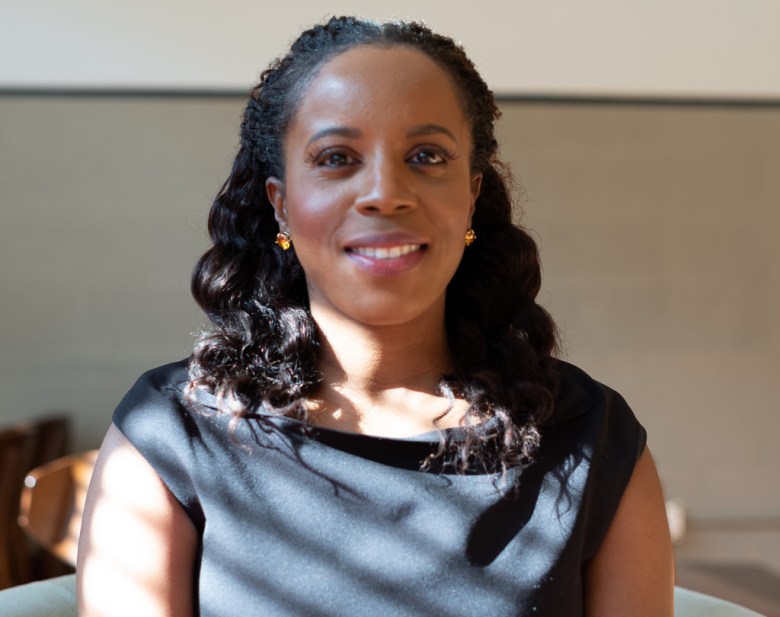
How would you describe your activism?
“I am a truth teller in the media.”
What sparked your activism?
“I have always been outspoken about politics and cultural issues. This past year I decided to use my voice in the mainstream media to help amplify a liberal perspective that I thought was missing in the conservative media landscape. I also believe we should continue to apply pressure to our elected leaders even when we identify with their political party. Every leader can be pushed to do further good, but the people have to use their voices and actions to push them.”
How does your activism influence the community, those you’re advocating for and the people you hope to serve?
“I can only hope that my actions help people who are thinking of getting involved in politics. Everyone has a voice in this country and everyone has a choice about how they will use their voice to influence positive or negative actions. I want to continue using my voice as a positive narrative that you can be young, black and engaged.”
Who are some of the activists that influence you and why?
”Tarana Burke, Malała Yousafzai and Leymah Gbowee are three of my favorite activists. Each woman has changed the narrative about their respective fights in their home countries of America, Pakistan and Liberia respectively. Often we see men amplified for much of the work women do, but these women defined a lane for their work and changed the narrative around justice in their countries.
How can others follow your work or join your movement?
“Follow me @krislknight on Twitter and Instagram.”
Nneka Nnamdi: Technoartivist, 44
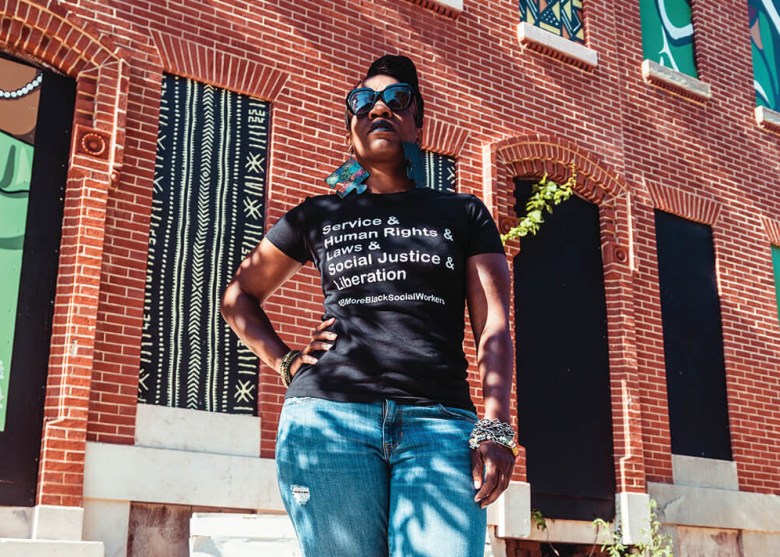
How would you describe your activism?
“With over 20 years of technical experience I have a diverse body of knowledge and capabilities which include various areas of the software development life cycle, community arts and wellness program development. Most recently I have become a licensed real estate agent. Skilled in creating healing spaces and teaching practical ways of managing trauma, myself and my sister Maya Onyango have created SisterGather; events for women of African descent to bond, heal and grow. My studies include initiation in the practice of IFA, Principles of Trauma Informed Care as well as Masters in Management with a specialization in Organizational Leadership. My artistic experience includes West African dance with Sankofa Dance Theater, Dishibem, Urban Foli, Wombworks and #BaltimoreGirls. My activism uses technology and art to protect and project the lives and cultures of Black people in the diaspora toward building a brilliant Afro-future.”
What sparked your activism?
“On Mother’s Day 2016, I witnessed what could have been an awful tragedy. A few children were riding their bikes down the sidewalk of Fremont Avenue, crossing Lafayette Street, where four brownstones were being demolished. The demolition site was filled with debris, gaping holes about six feet deep in the ground, and no gate to prevent site access. I witnessed the potential danger associated with these unsafe conditions such as a child falling into the unsecured debris. That day, I began researching, documenting, reporting and tracking environmental hazards created in part by the demolition sites around the city and the structures that preceded them. That effort and research has resulted in the development of an environmental justice and community development innovation called Fight Blight Bmore.”
How does your activism influence the community, those you’re advocating for and the people you hope to serve?
“Our work influences the community by providing data, information and resources that support building and maintaining beloved communities. For example in 2021 we assisted 75 homeowners with clearing tax debts, deed disentanglement, water bills challenges, estate planning, etc.. We also advocated for the cancellation of the tax sale which resulted in 976 homeowners being removed from the sale and the formation of the city’s tax sale working group, aimed at tax sale reform. Most importantly, we facilitated presentations in the community on ‘Saving the Family Home in the Age of COVID19.’ These presentations center the family home as more than just an economic asset but an socio emotional and cultural asset. Hundreds of residents of the Black Butterfly were able to participate in the presentations along with social workers, housing advocates and community developers.”
Who are some of the activists that influence you and why?
“Caryn York, Kibibi Ajanku, Ella Baker and Wangari Maathai are among the activists that influence me. They influence me through their exhibition of the breadth and depth of Black women’s capabilities. Further, their work centers the lived experience and cultural ways of people of African descent as technology that creates and maintains health and wellness on an individual and collective level.
How can others follow your work or join your movement?
“People can follow or join in with the work by following us on social media: Facebook: Fight Blight Bmore; Twitter: @FightBlightBmore; Instagram: Blight2Bright or on the web: www.fightblightbmore.com. Donations to the 2022 Tax Sale Bailout, which is again supporting homeowners with clearing tax debt, creating estate plans, obtaining home repairs and tax credits can be made here: https://www.paypal.com/donate/?cmd=_s-xclick&hosted_button_id=MG3U54MZRAA5J&source=url. “
Née Née Taylor: Co-Conductor Harriet’s Wildest Dreams, 55
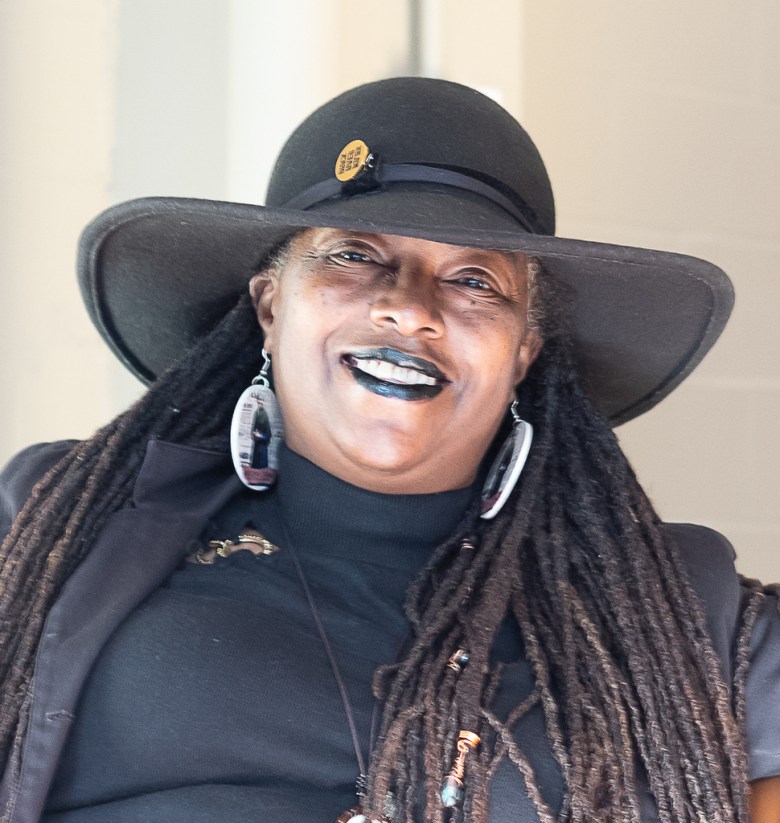
How would you describe your activism?
“An abolitionist unapologetically Black Conductor walking on top of the Railroad tracks centering , empowering and freeing all Black lives at risk for state-sanctioned violence in the Greater Washington area.”
What sparked your activism?
“As a D.C. native, activism and advocacy work chose me. I was that little girl passing out flyers for Willie J. Hardy East of the River. I was the niece of a Black man that drove a pickup truck across the United States with a Black woman in the back hanging from a cross during the Civil Rights Movement. I was brought up and taught to always keep the dream alive and fight for our liberation as a child.
How does your activism influence the community, those you’re advocating for and the people you hope to serve?
“I’m very involved with the Black youth. I’m known as Auntie Née Née. I make space for the youth and give them the baton now as we build for our Black future. My community lives knowing that we have everything we need to survive and keep each other safe.”
Who are some of the activists that influence you and why?
“My mother, Harriet Tubman, Angela Davis and Assata Shakur. These strong Black women fought for our liberation with no fear and determination. My mother raised her family in the Projects of Southeast, Washington, D.C., but because of her advocacy for the less fortunate as a child I felt just as important as a child that lived in Georgetown.
How can others follow your work or join your movement?
“Go to HarrietsDreams.org and Instagram and Twitter @HarrietsDreams or @NeeNeeTay”
Lenett Partlow-Myrick: Artist, Educator, Peacewalker, 66
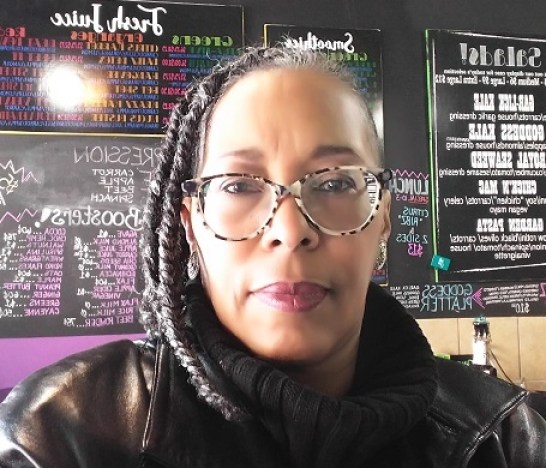
How would you describe your activism?
“My art and spiritual practices are my activism. I believe in the restorative power of remembering, claiming, and standing boldly in my indigenous African American culture and heritage. Our stories and our individual and collective lived experiences here on Turtle Island from the enslavement holocaust to the present are testimonies of an extraordinary people endowed with uncommon strength and power to overcome anything. So I teach our literature and her/history. Our culture is rooted in pure genius, deep magic, and a cosmic consciousness of how to do the impossible, the improbable, the unthinkable. So I make things–mixed media compositions, oil paintings, drawings, sculptures–that give voice to our triumph over tragedies, healing, transmutation of isms, and capacity to love. Our struggles are sourced from a universal ethic of “do right woman / do right man.” So I walk with an international community of peacemakers who understand what happens when we impress our intentions for freedom and justice into Mother Earth. And I hold sacred spaces for women to pray, work our hoodoo, perform our rituals and ceremonies, and vision our people forward!”
What sparked your activism?
“That old Black grandmother wisdom; growing up with hat-wearing southern Black men, who held their dignity in the face of racism and murderous homeland euro-terrorists; realizing that the ancestors are holding me accountable for doing whatever I can with everything I am working with; and getting a call from a friend 21 years ago to help our children remember what it means to dream have, altogether, sparked my activism.”
How does your activism influence the community, those you’re advocating for and the people you hope to serve?
“I believe my activism as an artist, educator, and Peacewalker influences people to embrace their personal and spiritual sovereignty and to realize we come from people who have done the impossible, the improbable, the unthinkable. Their genes and spirit live in us; therefore, we–and our children’s children’s children–are capable of the same.”
Who are some of the activists that influence you and why?
“Audri Scott Williams, Karen Watson, Ebun Laughing Crow Adeola, Dr. Andrea Dardello, Rashida Forman-Bey, Asantewaa Harris, Rev. Dr. AdaRa Walton, Rev. Bernette L. Jones, Aina Campbell, Truxon Sykes, Ross Ford, Ernest Kromah, Fred Clifton and my son Yale Partlow are the foremost “everyday people” activists that have most influenced me with their unwavering commitment, love, sacrifices, service, excellence, and determination to enhance and elevate the consciousness, wellbeing, health, economic and political conditions of Black people and, by extension, all our relations here on Earth.”
How can others follow your work or join your movement?
“People can follow my work via my website at partlowart.com, on Facebook.com/artbypartlowart and Partlow Art on Instagram.”
Anything else you’d like to add?
“Thanks for the consideration and much LOVE!”
Cherrelle Swain: Social Impact Filmmaker, Creative Strategist

How would you describe your activism?
“To me, activism means lifting while I climb and pulling seats up to tables where we are not represented. Data shows that Black women, more than any other race or ethnicity, accredit other Black women for their own advancement. As I think back to the Black women in my life, there is a legacy of defeating odds, pioneering amidst racial and gender discrimination, and still striving to create economic, social, and spiritual abundance with and for our community. My goal is to preserve the history of our ancestors and create intergenerational movements by capturing stories that shape culture through the lense of wellness, self-preservation, and love.
“This passion has inspired me to continue the legacy by building a community that empowers and sustains Black women and girls.”
What sparked your activism?
“In 2008, I was an Americorps service member leading a summer school classroom of 5th graders in literacy at LaSalle elementary in Northeast, Washington, D.C. I remember deliberating intensely trying to decide the best theme for my classroom. It was important to me that the curriculum was empowering for Black children and that in it they could find the inspiration to believe they can overcome. Finally, I selected the theme, “The Rose that Grew from Concrete,” by Tupac Shukur. We used that summer to teach the students the power of expression and reflection through spoken word and poetry.
“That following summer, I was walking down Ingraham Street and bumped into a former student. She ran toward me shouting excitedly, “Ms. Cherrelle, Ms. Cherrelle, remember the poem you helped me write? It won an award!” I didn’t know at the time, but thinking back – that may have been the moment that sparked my activism. It is at that moment I learned my passion can make an impact on the next generation.”
How does your activism influence the community, those you’re advocating for and the people you hope to serve?
“One of my proudest contributions to Washington, D.C. is previously serving as the Director of Community Engagement at CityBridge Education where we worked to invest millions of dollars into entrepreneurs of color with the capability and vision to carry out the herculean task of building innovative and equitable public schools.
“Through that process, I advocated for native Washingtonians to bring their visions to life. As native Washingtonian’s continue to combat gentrification, this work was a step toward putting DC’s own into position to create systemic opportunities for the most undervalued children and families in the city.
“This experience also showed me the power of philanthropy. I continue to work to influence the community by advising foundations, companies, and media institutions committed to working with BIPOC communities to realize change.”
Who are some of the activists that influence you and why?
“This question brings me to a quote by Maya Angelou “I’ve learned that people will forget what you said, people will forget what you did, but people will never forget how you made them feel.”
“Marie Johns for her commitment to Black economic mobility, blazing trails for underrepresented entrepreneurs, and empowering women. Dr. Eleanor Traylor for her revolutionary impact as a community builder in the Black Arts movement, advancing literature, higher education, and art for Blacks. Rev. Will Lamar for constantly agitating the status quo of the church by pushing us to question American capitalism and economic infrastructures that generate inhumane inequality. Tonia Wellons for her bold and courageous commitment to close the racial wealth gap in the Greater Washington region. Marshall Pollard for positioning Generation Z to lead the movement while building intergenerational networks of support around them. Darius Baxter for empowering children and families in Washington, D.C. to know that no dream is too big. Ebonee Davis for using her platform to teach others how to heal.
“So many activists inspire me and I am grateful to call everyone mentioned a friend and superhero. I am not just moved by what they’ve done, but because of the way they make me and others feel.”
How can others follow your work or join your movement?
“I am producing a 90 minute feature length documentary called Black Girls Film. In it we are examining what it means to be a successful Black woman in America. Follow that project @Blackgirlsfilm. You can keep up with me on all social media platforms @cherrelleswain or on my website at www.cherrelleswain.com.”
Sarah C. Wallace: Operations Manager, Strategic Planning Consultant, 34
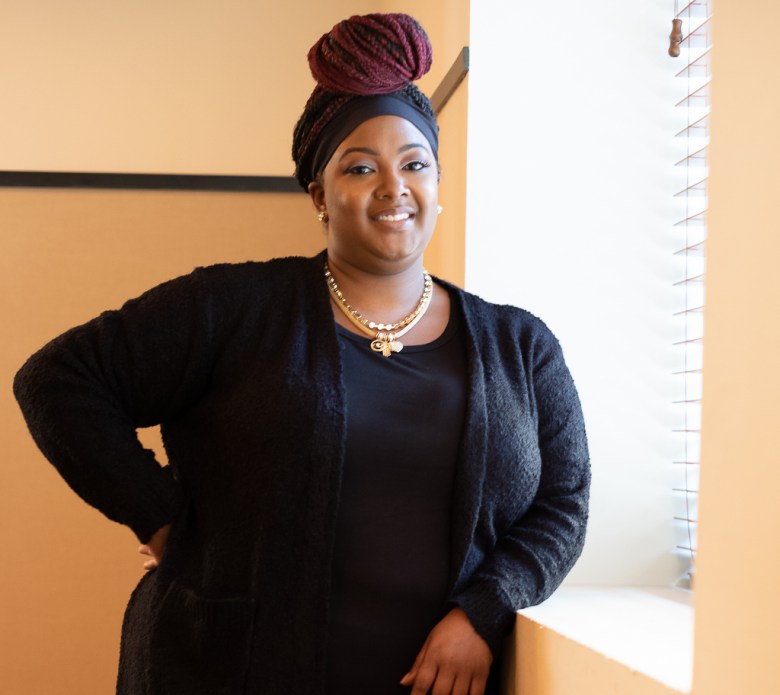
How would you describe your activism?
“I would describe my activism as humble, passionate, and motivating. I’m almost always working on something for the community everyday in various capacities!”
What sparked your activism?
“My activism was sparked when I went through a bout of homelessness when I had my child, and had to learn how to navigate systems that I knew nothing about prior to. Nobody plans on becoming homeless. Learning these systems made me realize that they are hard, and that things need to be done to improve community processes all across the board- from smaller waiting times for emergencies (eviction prevention and electricity bill help), to more resources for families (youth mentoring and OST programming), to recreational outlets (arts and entertainment events). So I began working on projects based in neighborhoods and communities, and it has grown from there.
I just honestly like to help people and see them shine.”
How does your activism influence the community, those you’re advocating for and the people you hope to serve?
“Currently I serve as the Operations Manager at The Resource Center in 21217, and specifically focus on the Housing Program. So I am helping homeless members of the community get housing, while also serving our walk-in clients with resources in almost every area: from food to clothes, to entitlements, to employment. I also have a business as a Strategic Planning Consultant, where I help community-based business and organizations strategize and plan how to reach their next levels of success. This includes planning, content building, graphic design, and public speaking coaching.
I hope that the work that I am doing everyday best helps others by letting them know that they are seen, heard and that even when at your lowest, there is someone here for you that will help you rise out of your situation to where you need to be.”
Who are some of the activists that influence you and why?
“Hmmm… Activists like Danielle Torain, Dejuan Patterson, Lamontre Randall, Laquida Chancey, Catalina Byrd, Aaron Maybin, Nicole Mundell, Dominic Nell, Jerel Wilson and so many more. People like them just see the need and step in to fill it, whether it be by having the necessary meetings, down in Annapolis with legislation, running the necessary programs, or by organizing on the frontlines. Everyday they show up for the community without breaking a sweat, and it’s inspiring to say the least. I’m blessed to call many of them friends.”
How can others follow your work or join your movement?
“Others can follow The Resource Center on Facebook, and follow me on Facebook, Instagram, and LinkedIn, or just stop in the Center to ask some questions. We’re always happy to answer them!”
Anything else you’d like to add?
“Thank you for seeing me as notable for this recognition! It’s so encouraging to be a part of this!”
Claudia M. Watts: Director of Culture Eaton DC, Arts Writer and Consultant, 33
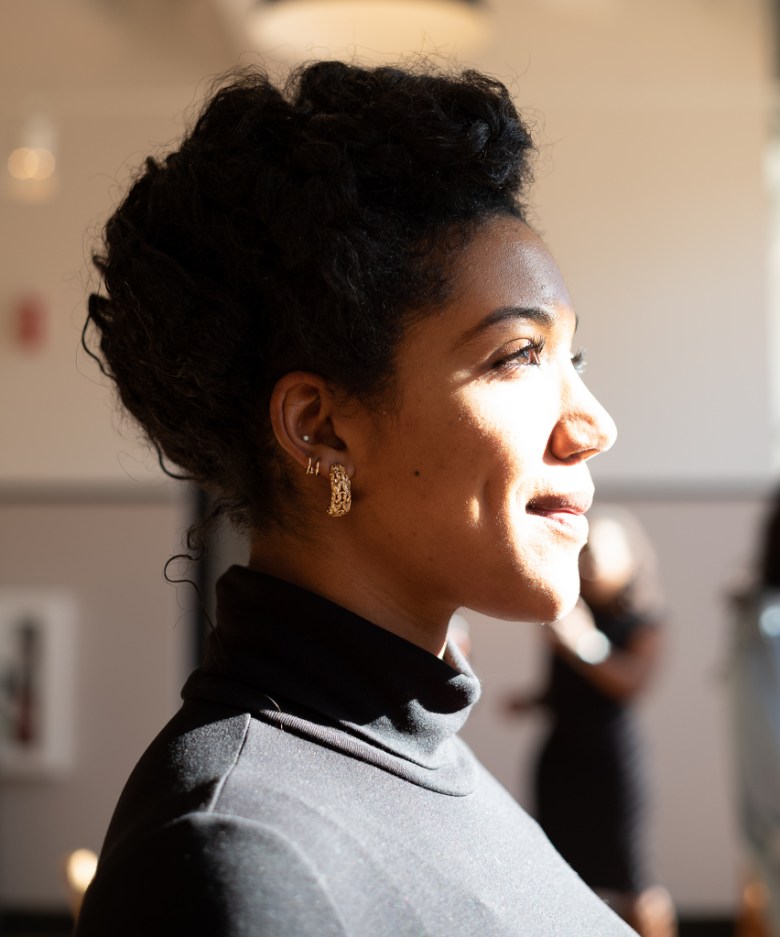
How would you describe your activism?
“I create opportunities for Black artists and creatives through programming, advising on arts-based projects, and building community. I also tell their stories so others might be inspired to dream and ignited to act.”
What sparked your activism?
“When I made the decision to pursue a career in arts, I found it very difficult to find employment and salaries were never on par with the work the role demanded. Very few people can live on $40K in a major city unless they have a partner or family that can help support them. The socio-economic bias was apparent. It took years of working on the side with smaller organizations and networking before I secured a full-time role at a major institution. I was fortunate to be brought in by a dynamic Black woman who was very forthcoming about the lay of the land. I quickly noticed there weren’t many people who looked like us in roles of leadership particularly those related to art. I vividly remember sitting in a very intimidating conference room, as I served on a pan-institutional steering committee of about 20 people and being the youngest and only Black person in the room. I also realized there was a great disconnect with access to information. There are so many occupations one can have within the arts and culture sector. Yet, no one talks to our youth about these opportunities or how creating a pipeline for people of color can shift the dynamic of the art world in general.”
How does your activism influence the community, those you’re advocating for and the people you hope to serve?
“My current role at Eaton DC has allowed me to create space and programming in support of Black artists, arts administrators, writers, culture workers, and independent organizations. In 2021 I hosted BlkArtHouse’s first in-person exhibition. BlkArtHouse is a web-based platform that connects Black artists to buyers. The best part of my experience was helping the founder and creative director tackle the learning curve that comes with putting on a show. I remember it well and was able to provide a level of care I know they wouldn’t have received at another venue. The organization supports artists in a myriad of ways through entrepreneurial workshops, legal advice and networking. I am also working on creating a micro-residency program and rotating exhibitions with work from D.C. based artists. Though, everything doesn’t have to be a big production. Sometimes people just need a home for their events or ideas.”
Who are some of the activists that influence you and why?
“I am immensely blessed to have a community of creatives who are constantly inspiring me with their drive and ingenuity. Though if I must name a few, Keyonna Jones, Dee Dwyer, Katie Petitt and Lafayette Barnes. Keyonna is dedicated, and always keeps it 100. I watched her pour everything into the Congress Heights Arts and Culture Center because she so vehemently believed in arts as an outlet for her people. I fell in love with Dee’s photography while curating her in a Black History Month show. Her portraits read like a love letter to the Southside. She makes the “everyday” intimate and elevates what most might dismiss to a place of beauty. Katie Petitt is the Director of Impact at Eaton DC and founder of Current Movements. She’s the perfect mix of sweet, swift, and fearless. She has an extensive network and gives so much of herself to the community while leading a company that focuses on the intersection of activism, film, and art. Finally, Lafayette Barnes, holding it down for the third generation in a family of Black publishers. His work with the Washington Informer and The Bridge is taking us into the future.
How can others follow your work or join your movement?
“Donate to local arts organizations. Buy Black art and do so understanding it’s an investment in the preservation of our culture. If your child is artistically inclined, support them to the best of your ability.”
Hope Wiseman: Founder of Mary and Main, Cannabis Social Equity Advocate, 29
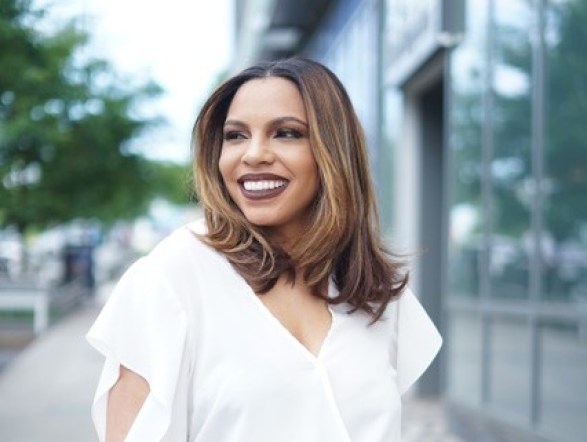
How would you describe your activism?
“As a minority woman in the cannabis industry, I am on the front lines of history. We are in a time where the laws that are currently being created will dictate how this country will govern a multi-billion dollar industry as it becomes federally legal. I am making sure that true social equity is implemented to ensure that the people who have been most harmed by the war on drugs, have an opportunity to be a part of the industry and participate in the profits as well as the problems that have been created by this war are address with the profits and influence of the industry itself.”
What sparked your activism?
“At first I was inspired by the economic opportunity that this industry provided. I realized that there would be very few times that I would have a chance to get into an emerging industry that is growing at the rate that it is, at the ground floor level. Once I was involved in the space, I realized that getting in at the ground floor meant working to help create the regulations that will govern this space in the long run.
Historically, cannabis has been used as a weapon against Black and Brown people in order to incarcerate and criminalize them. Now that the industry is becoming legal, it is imperative that Black and Brown people and the communities that were disenfranchised are given reparations for the harm caused. As one of the early adapters to the space, I have a duty to highlight my experience and help create a better one for those like myself in the future.”
How does your activism influence the community, those you’re advocating for and the people you hope to serve?
“There are many ways I am able to touch the community and those who I am advocating for. Through my work in cannabis advocacy I am able to help create legislation that takes tax revenue and reinvests directly into the community. A more indirect effect has been all of the young people I have been able to inspire to follow their own unconventional path to entrepreneurship and building a legacy for their families.”
Who are some of the activists that influence you and why?
“I am very influenced by some of the OG cannabis activists and business owners like Wanda James, Roz McCarthy, Leo Bridgewater, and Jane West. They have dedicated their careers to ensuring this industry is truly equitable and it is seen throughout all of their work. I am fortunate enough to be able to learn from them and work alongside them to make our dream of the industry come true.”
How can others follow your work or join your movement?
“You can follow me at @iamhopesodope on all socials and hopewiseman.com. You can follow our business at @maryandmain and maryandmain.com. Be on the lookout for more exciting things from us in the future!”
Olu Butterfly Woods: Artist, Village Builder, Program Director of DewMore Baltimore, Cultural Curator, 44
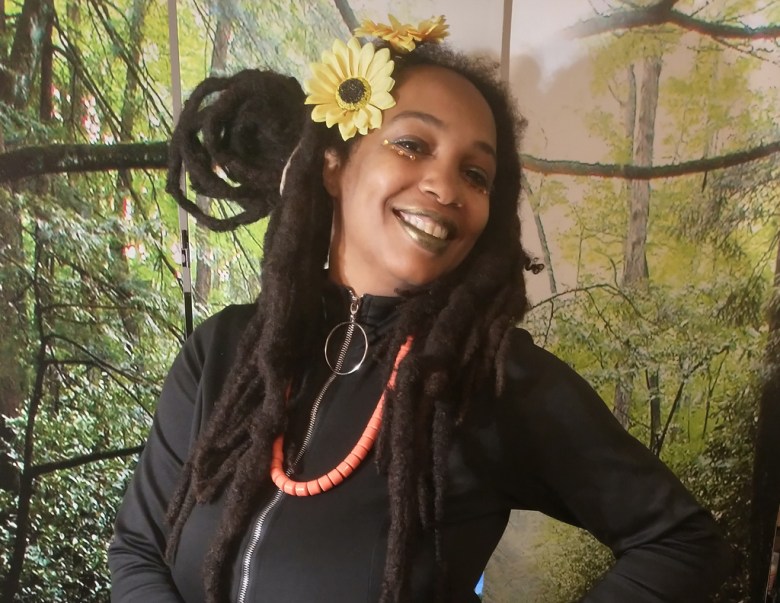
How would you describe your activism?
“I am a Village Builder, which, in general, means that I am innovating what we have and do back to our natural state of being members of a village. This is infused in everything I do and may look like starting a homeschool collective, helping a community mother, being available to collaborate with all the inspired brilliance around me and lately building a cultural hub in South Carolina to elevate the rich resource of my Gullah heritage. I also work to decolonize STEM and education, offerings from my unique background of being trained as a mechanical engineer, daughter of an accomplished chemist and my extensive African upbringing, travel and study to open up access to indigenous knowledge, participation in our collective futures and ultimately liberation. This looks like throwing edutainment events like The Children’s Imagination Ball and doing professional developments for educators.
I am a cultural leader in Baltimore and we proclaim artivism, which means we are unapologetic in speaking truth to power and seek ways to activate the people through shining a light and through joyful celebration. I have co-founded many arts and youth organizations, such as Poetry for the People Baltimore, the Baltimore City Youth Poetry Team that has gained an international reputation and Afrikan Youth Alchemy that has taken many Baltimore youth on a self discovery journey to Ghana and Ethiopia. I have produced and co-produced close to 700 events, including a historically annual all women’s showcase entitled Ladies Verse, Afram Festival B-stage, and Organic Soul Tuesdays: a live music event that ran for 15 years and polished or launched many careers. In general, taking care of artists is a big part of my mission because I see them as a healing vanguard to shift our community.”
What sparked your activism?
“My mother is a pan African healer who worked in education, mental health and dance. Numerous discussions with my great uncle who was a pan African before the term was coined who loved technology, culture and writing. So many community storytellers and mentors who made it clear that I had an obligation to improve my world. I have had the pleasure of being a bridge across worlds: art and technology, the African Diaspora with my Nigerian and Antilles and urban east coast background, and across socioeconomic divides.”
How does your activism influence the community, those you’re advocating for and the people you hope to serve?
“I hope my activism reminds people of their purpose and their possibilities. This is all that is needed for us to be whole and healthy, like a body that is functional and expels toxicity. I am thankful that I understand I do not have to get the credit, just need the work to happen and to be carried by many.”
Who are some of the activists that influence you and why?
“Bob Marley, Bea Gaddy, Malcolm X, June Jordan, Fela Kuti– soooo many.”
How can others follow your work or join your movement?
Follow me at @olubutterfly on Instagram, Olu Butterfly on Facebook, and my website www.dewmorebaltimore.org. My book is coming out this summer: {Jupiter Memoirs}.”
Zsameria: Founder of SwapDC, 35

How would you describe your activism?
“Environmental Activist”
What sparked your activism?
“My activism started being raised in D.C. School and some media outlets would promote recycling, but in my neighborhood there was trash and litter. As I grew older, I noticed the disconnect in the environmental messaging that didn’t include my community. One of my goals is to change the narrative of what the recycling industry looks like to include more Black and Brown people. I actively encourage those around me to create the necessary conditions to ensure a world where everyone, no matter your class, size or color, feels included in improving the climate crisis. Learning about the effects we’ve had on the planet can be daunting so I started SwapDC where we creatively recycle.
How does your activism influence the community, those you’re advocating for and the people you hope to serve?
“My goal is to continue to pave the way to create and build environmental literacy. Most of our events are all ages, so from the babies to the elders, we are learning how to be kinder to the planet together. Climate change is a Civil Rights issue. We deserve clean water and clean air, but due to greed from big corporations, we now must counter the pollution by doing our part in making sure we’re not over using resources and trashing the earth. My activism encourages people to reduce, reuse and recycle by hosting creative recycling workshops, events and parties in the D.M.V. area. All remainder swap items are donated to local shelters and those in need to help close the textile loop that the careless fashion industry fuels. We hope to serve the many clueless humans who regularly contribute to the climate crisis.”
Who are some of the activists that influence you and why?
“Dr. Ayana Johnson because of her leadership with her climate initiative, Rev. Yearwood and his approach with the Hip Hop Caucus and the late Kharabia Rayford who made a difference in my life by hosting neighborhood cleanups and helped to get the Tenant Opportunity to Purchase Act passed.
How can others follow your work or join your movement?
“Join the wave at swapdc.com and on all social media platforms @swapdc”
Anything else you’d like to add?
“There’s only one planet, Moe.”
Help us Continue to tell OUR Story and join the AFRO family as a member – subscribers are now members! Join here!
The post AFRO Activists 2022: 20 Queens of the Movement appeared first on AFRO American Newspapers .


